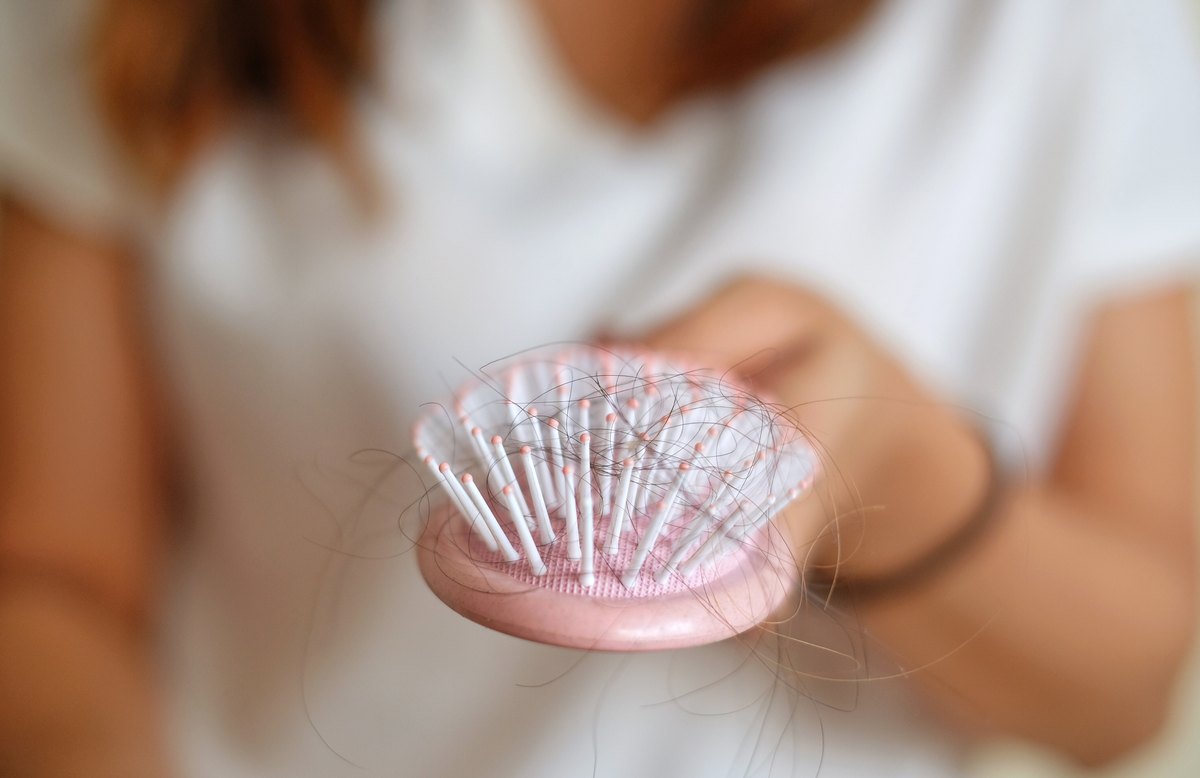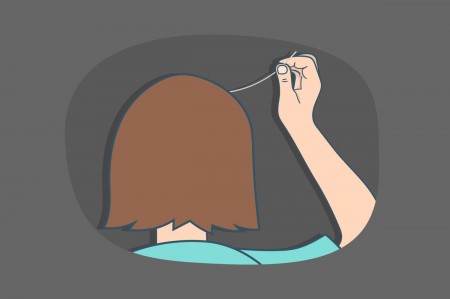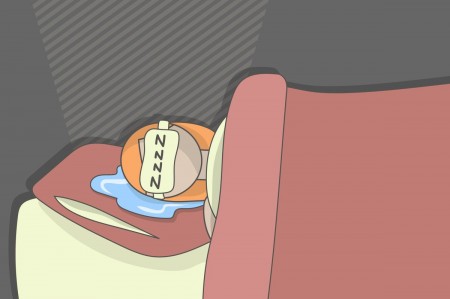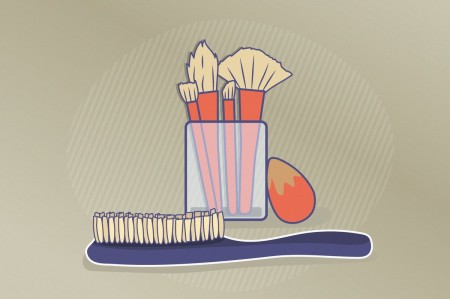
Advertisements
Seriously, your brush is filled with hair again? Your shower drain looks like you scrubbed up your pup. Or your bathroom floor is basically a graveyard of many, many strands.
Video of the Day
Losing some hair every day (and probably more than you think) is normal — and good for the overall health of your hair.
"[This process] helps to get rid of old, damaged and/or broken hairs to replace them with new, stronger and healthier hairs," Helena Kuhn, MD, assistant professor of dermatology with The Warren Alpert Medical School of Brown University, tells LIVESTRONG.com.
Of course, if you're losing more, it could be a sign that something else is going on, from nutritional deficiencies or an underlying disease to tough-on-your-scalp styles.
What’s Normal When It Comes to Daily Hair Loss?
It's normal to lose 50 to 100 hairs per day, according to the American Academy of Dermatology (AAD). However, if you feel as if you lose more, that can be acceptable, too.
"This is something I talk to patients about a lot. In general, I tell patients not to worry if their daily hair loss is 150 or less — maybe even 200 hairs for people with thick hair," Dr. Kuhn says.
Why the large range? "It's about finding a 'normal' for you," she says.
This is tough to quantify, certainly. If you have long hair, a clump of 10 hairs might look like a lot, while if it's short, it may be tough to notice this at all.
If you have longer hair, Dr. Kuhn says, it's normal to find strands stuck to clothing or around the floors or furniture of your home.
Then, there's the shower. "Almost everyone will leave a little bit of hair in the shower drain," she says. Larger piles collecting in the drain, however, may signal a problem.
"Usually, people are pretty savvy about knowing how much shedding is typical for them," dermatologist Paradi Mirmirani, MD, an AAD faculty member, tells LIVESTRONG.com.
If you're looking for a visual scale of the hair balls produced from losing differing amounts of hair depending on hair length, she points to the images in a March 2017 issue of Dermatology and Therapy. Check it out and see where your strands fall.
In addition, Dr. Mirmirani adds, there can be age-related, seasonal and hormonal variations in the rate of hair that you lose. "In some situations, you can expect ups and downs in the amount of hair you're shedding," she says.
Are There Differences for People Assigned Male at Birth vs. People Assigned Female at Birth?
When it comes to daily hair shedding, there's no real difference between what's normal for people AFAB and people AMAB. It may look like people AMAB lose fewer hairs each day, but that's likely because their hair tends to be shorter.
Advertisements
True hair loss is a bit different. While the terms "male-pattern hair loss" and "female-pattern hair loss" may sound outdated, they're the best terms to describe what's going on with your scalp.
For those AFAB, you may notice that hair loss is concentrated on the top of your head. Your part may appear wider, Dr. Kuhn explains. For those AMAB, you may notice a receding hair line and thinning on the crown of your head (a "bald spot," if you will).
"Interestingly, [these two types of hair loss] still result from the same pathophysiology," she says.
Hair loss is frequently due to your sensitivity to circulating androgen. (Androgen is a group of sex hormones, such as testosterone, that's present in both sexes, but in higher levels in people AMAB, according to Cleveland Clinic.) "Ninety-nine percent of patients with pattern hair loss have normal hormone levels, but hair follicles are just very sensitive to circulating androgen," Dr. Kuhn says.
This can be due to genetic factors, as well as natural aging.
The Hair Life Cycle
Losing hair each day is completely normal, Dr. Kuhn says, because it's part of the normal hair cycle. Understanding just a bit about routine hair shedding can help you embrace some of those strands showing up in your brush.
There are three main phases of the hair cycle:
- Anagen: A time of rapid growth.
- Catagen: The transitional phase where the hairgets ready to be shed
- Telogen: The shedding stage
Anagen determines how long your hair will be, Dr. Kuhn says. For instance, eyebrows have a shorter anagen phase compared to the hair on your head. (Can you imagine otherwise? It'd be constant brow cuts.)
Catagen, on the other hand, lasts just a couple weeks as the bulb of the hair moves toward the surface of the skin so that it can then fall out in the telogen phase.
Telogen is where hair follicles enter into the resting phase and fall out. This is where the "normal-for-you" hair loss comes from each day.
Related Reading
Why Your Hair Falls Out When You Run Your Fingers Through It
5 Things That Can Cause More Hair Loss
If you're losing more than 100 to 200 strands of hair (about a palmful) per day, something else may be going on beyond routine hair shedding. Here are five reasons you're losing more hair than normal:
1. Physical or Mental Stress
Called telogen effluvium (or TE), this simply means excessive hair shedding, which happens as a response to some physical or mental stress on the body, which can include the following, per the AAD:
- Illness (like COVID-19)
- Losing a lot ofweight
- Giving birth
- Having surgery
- Going through a divorce or job loss
It's likely that everyone will experience telogen effluvium at some point in their lives, says Dr. Kuhn, but the good news is that this is not permanent and your hair will come back completely over six to 12 months.
That will feel like a long time when you're in it. And the fact that hair will grow back does not minimize any distress you're having about it now. Still, rest assured that it is not permanent. Once whatever caused it resolves, your hair will get back on its normal growing schedule.






